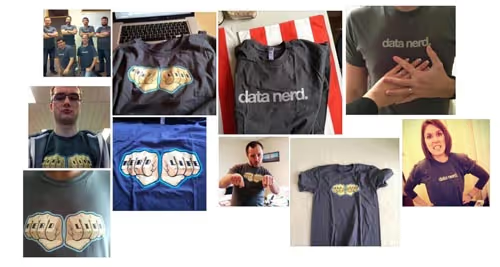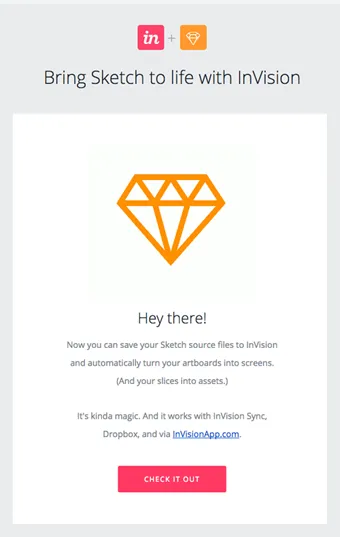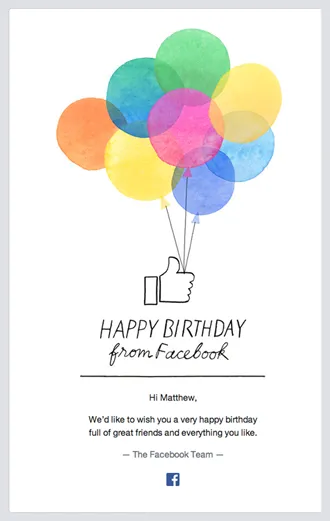12 Activation Tactics to Experiment With Right Now
I've been spending a lot of my time thinking about Activation lately. It's clearly an important part of the customer life-cycle and it still surprises me how many companies don't invest resources in this area.
Many teams over-invest in areas like acquisition and brand awareness, but end up leaving all those potential customers after that initial touch-point. Here's a stat that puts this into perspective "It costs 7 times more to acquire customers than to retain them." Source
One last thing before we jump into the tactics...A successful growth plan is only executed when you have a commitment to process. Anyone can run experiments and tactics after reading a blog post/e-book, but the ability to prioritize and learn will help you see real results from your initiatives.
1. Onboarding Email Drip Campaign

Onboarding is one of the more important aspects of the customer journey and is something that is quickly becoming a priority as companies learn how many customers are turned away at sign-up. There's no replacement for that first impression and you have to make sure the user is guided through initial sign-up to become an active user.
In the example from Asana (a leading project management tool) they're trying to on-board a new user with a series of emails with short form video explainers. They highlight the common painpoints that their users encounter(IE internal email overload) and how using Asana can alleviate that pain.
2. Short-Form Video

As video continues to become the preferred medium for learning and education many companies are adopting video tutorials to educate their customers. This type of content is much more engaging than blog posts or documentation.
Unbounce has incorporated onboarding videos and many different screencasts/tutorials into their website to help show potential/current customers the value of their platform.
That's not to say that those other mediums don't create value, in fact when they're used together with engaging video content it can help solidify the story or concept you're trying to tell your audience.
3. Incentive to Activate (Free T-Shirt, RC helicopter)

Giving away Startup T-shirts isn't a new or innovative marketing tactic. Whenever you go to a conference or networking event there's plenty of company swag handed out.
So why are we talking about it?
NewRelic (a leading app performance monitoring tool) has found a way to use T-Shirts to incentivize customer activation. They've implemented an automated system that will send out a T-Shirt when a customer first deploys the NewRelic tracking code. By hooking up their marketing automation and backend fulfillment/CRM systems they've been able to take the manual headache out of the process.
4. Trial Expiration

Trial expiration emails are something that can directly influence the bottom line, unfortunately because of this they can be a bit tricky to get right. So you should always be implementing tests to see how you can improve your trial to paid conversion rate. Ask yourself - How many times should you send an expiration reminder email? Are you okay with extending their trial? What behavioral data can we use to send more personalized and targeted messages?
In the example above from Squarespace it's a hard sell email 24 hours before the users' trial account expires. It's one last shot to remind the user of the products' value, highlighting their benefits in a 1-2-3-4 horizontal layout.
The first paragraph also uses the 'minimizing pain' persuasion tactic, "by upgrading now, you'll ensure that your website stays live and you can take advantage of these great features..." This reminds the user of the pain they will encounter if they try to migrate their site to another provider, etc..
5. Quick Customer Case Studies

Social proof is a powerful motivator, it can be used to inspire a particular action from a potential customer. Whether you are trying to re-engage the user to login and get value from your product or you're trying to convince a marketing lead to move a bit closer and talk to a sales rep. This motivation tactic has been proven to influence action from all types of consumers.
Not many things work better than social proof, we like to move in a pack. Many of your customers buying decisions are made to minimize risk on their end, so why not provide them with defensible case studies and testimonials whenever possible?
In this example from Invision (a leading web and mobile prototyping tool) they profile one of their clients a designer at Emma. By highlighting the common issues many designers have when collaborating on the design process Invision is able to naturally inject themselves into the conversation with a customer their audience can relate to.
6. Expiring Offer

Getting a customer to take an action is what we try to accomplish everyday. Whether it's using our product, downloading content or purchasing. We use a variety of persuasion tactics to get our jobs done. A very influential weapon in our arsenal is 'scarcity' we can increase a customers' desire to take action right away when we introduce elements of scarcity to our campaigns.
In the example above 500px (a leading photography marketplace) sends out an expiring offer to their potential customers in order to solicit an account upgrade to their Plus and Awesome accounts. What makes this compelling is that element of scarcity as the customer gets the sense that they are missing out on a good deal. The same marketing concept that makes people flock to Black Friday holds true when influencing online purchasing decisions.
7. Recommended Content

Another way to get potential customers active with your product is with recommended content. If you have some elements of user activity on your platform you can send them a content recommendation that is relevant to them. In the example above Rdio uses the listening history of this user to recommend another album by an artist(Odesza) they listened to. This helps personalize the recommendation and will have a higher chance of re-engaging the user than other campaigns.
8. Birthday Email
For consumer-facing products a birthday email is an important way to re-engage users that might not have signed in recently. Experiencing a birthday through Facebook shows you the value of the social network you've built on their platform.
Birthdays are also a moment in a users' life where they have more free time (IE take time off) and are more likely to treat themselves to online shopping or spend time on social apps like Facebook and Twitter.
9. Integration or Feature Announcement

This one I'm sure most of us are already doing, it's product marketing 101. Continually announce new features and integrations and customers will stay happy.
There's also a large case that your contingent of potential customers are also interested in what's been improving with your product. Maybe they couldn't use your product because of a key missing feature or needed an integration that was a couple months out. These announcements can help re-engage those potential customers and get more qualified leads back into the funnel.
10. Personalized Founder Email

In my own experience using different SaaS products and services this email pops up more often than not. Trying to establish a personal connection to the founder/ceo of the company and its potential customer is a smart way to personalize the business relationship with a potential customer.
I've seen many other companies automate this tactic, but haven't been able to hide the fact it's coming from their marketing automation service. Simply configuring your DKIM/SPF to make emails send from your domain helps give the authenticity that you're trying to achieve with the message.
11. Downloadable Content

Using content to attract and educate potential customers is one of the core principles of inbound marketing. In this example from Axure(a leading web and mobile prototyping tool) they created a free downloadable UI asset kit to help their target customer (Designers) create designs.
This type of content can be used directly with their main product at Axure and provides value to a designers' day-to-day workflow. Not every piece of content you create will have the same stickiness as the example above, but it's a great way to start thinking about how you can inject your brand into a target customers' day-to-day life.
12. Exit Interview/Survey Invitation

Knowing that you've lost the deal isn't always a bad thing. You can learn more from your failures than your successes. This enables you to get unbiased and raw feedback from someone who has experienced your business processes first-hand.
The customers that decide to leave can be a treasure trove of information for you. They can give you insight on everything from how they first discovered your brand to their experiences with your sales, onboarding and success teams.

